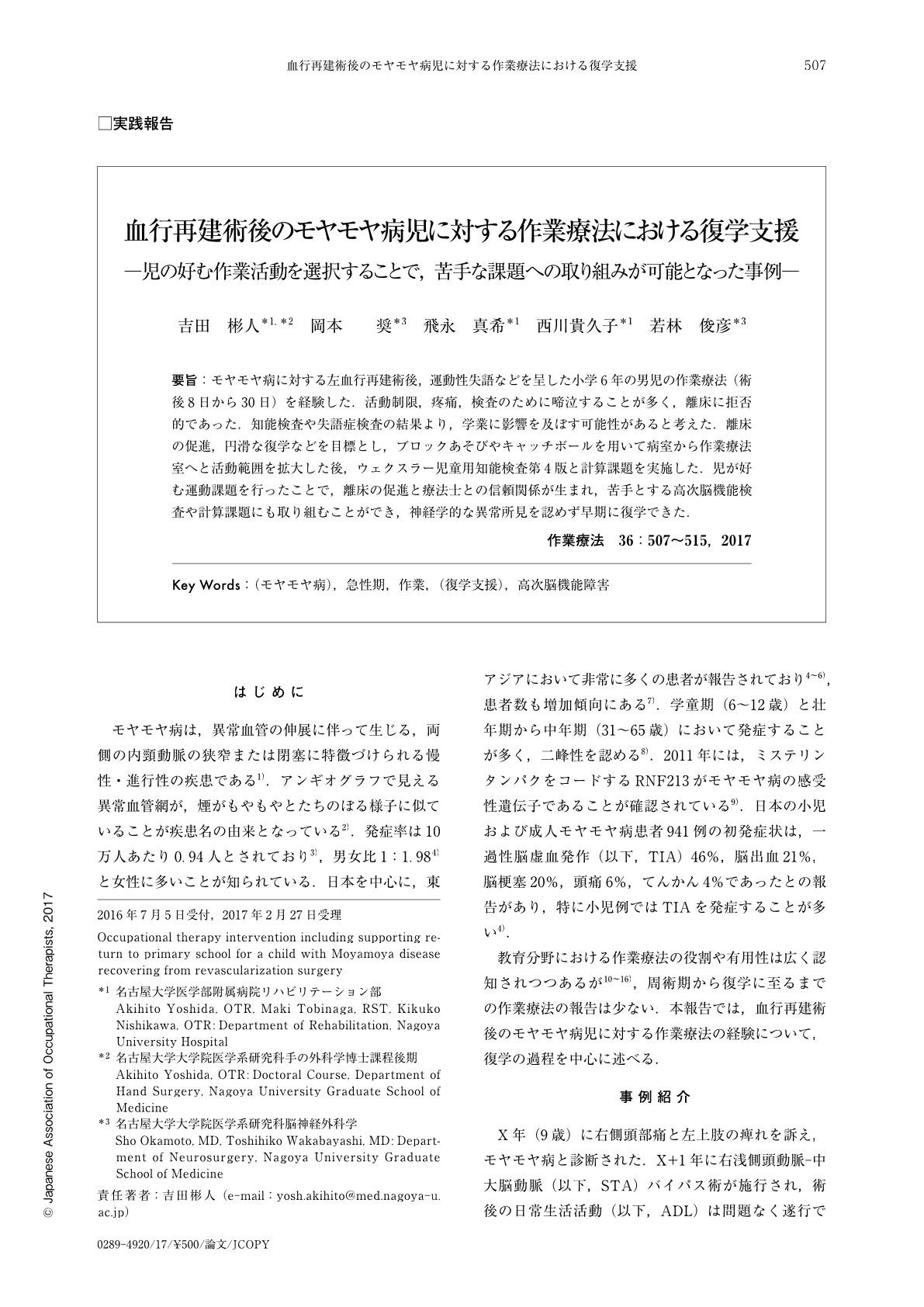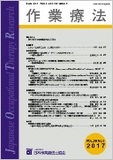Japanese
English
- 販売していません
- Abstract 文献概要
- 1ページ目 Look Inside
- 参考文献 Reference
要旨:モヤモヤ病に対する左血行再建術後,運動性失語などを呈した小学6年の男児の作業療法(術後8日から30日)を経験した.活動制限,疼痛,検査のために啼泣することが多く,離床に拒否的であった.知能検査や失語症検査の結果より,学業に影響を及ぼす可能性があると考えた.離床の促進,円滑な復学などを目標とし,ブロックあそびやキャッチボールを用いて病室から作業療法室へと活動範囲を拡大した後,ウェクスラー児童用知能検査第4版と計算課題を実施した.児が好む運動課題を行ったことで,離床の促進と療法士との信頼関係が生まれ,苦手とする高次脳機能検査や計算課題にも取り組むことができ,神経学的な異常所見を認めず早期に復学できた.
Occupational therapy was conducted for a male child of twelve years old who had left revascularization due to Moyamoya disease. He used to perform activities of daily living such as swimming and marathon before the surgery. Spastic paralysis of the right upper extremity and motor aphasia appeared after the surgery. He refused to get out of bed due to limitation of activity, pain, and examinations. Standard Language Test of Aphasia showed a slight disability in auditory comprehension. Moreover, he exhibited phonemic paragraphia, speed deterioration of writing, and miscalculation. Therefore, we predicted that he would abandon his school studies due to difficulties of hearing/writing and comprehension of new contents. The following goals were set: get out of bed, improve right upper extremity function, perform ADLs without symptoms and a smooth transition back to school. At first, occupational therapy consisted of playing with toy blocks, and catching an exercise ball. These enjoyable activities using motor functions promoted the expansion of the range of activities from the bedside to the occupational therapy room and the relationship between the child and the therapist. The relationship resulted in the child challenging calculation tasks and the examination of the Wechsler Intelligence Scale for Children-Fourth Edition. His return to school life has resulted in no neurological symptoms. Performance of patients' favorable occupations promoted getting out of bed smoothly and participating in unpleasant tasks.

Copyright © 2017, Japanese Association of Occupational Therapists. All rights reserved.


